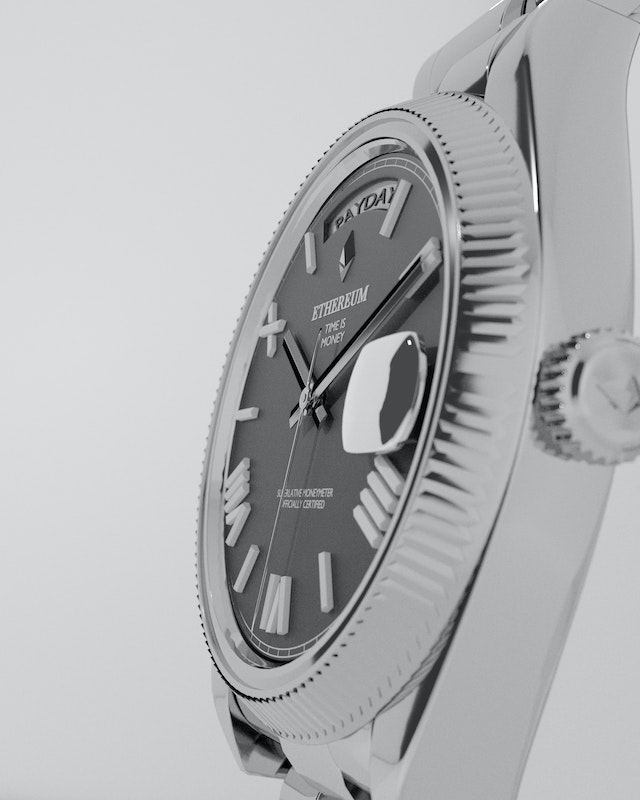How to create NFTs for physical products
06/05/2022
If you’ve been following the world of NFTs, you know that they have the potential to revolutionize how physical products are marketed and traded. But if you’re new to the concept, NFTs (or non-fungible tokens) may be a little confusing.
In essence, NFTs are secure digital assets that can’t be replicated. This makes them perfect for representing physical products.
In this post, we’ll explain how to create NFTs for physical products and outline some of the benefits of doing so. Stay tuned – it’s an exciting time to be in the NFT space!
Why are NFTs useful for physical products?
NFTs are used in many ways. Some people use them as investments, others as collectibles, and still others buy NFTs as digital artwork. But one of the most exciting types is NFTs that represent physical products.
It’s not always easy to track and manage ownership of physical products using traditional methods. NFTs offer a solution to this problem by providing a way to digitally represent each physical product. This makes it possible to track and manage ownership using the blockchain.
How do you create an NFT for a physical product?

There are several different ways to create an NFT for a physical product. One popular method is to use a service like OpenSea. This kind of marketplace allows you to easily generate and manage your own NFTs.
Another option is to use specialized tools and resources, such as the Binance Academy guides. These open-source resources provide an easy way to create and manage your own NFTs using comprehensive step-by-step processes. Using these tools, you can quickly and easily create NFTs for your physical products that integrate seamlessly with existing blockchain platforms.
Of course, the best way to get started with creating NFTs for physical products will depend on your specific needs and preferences. However, no matter which approach you choose, there are a few things that you’ll need to keep in mind:
First, you’ll need to decide which blockchain platform you want to use. There are many different platforms to choose from, each with its own strengths and weaknesses. You’ll need to carefully consider your options and choose the platform that best meets your needs.
Second, you’ll need to create a digital representation of your physical product. This can be done using 3D modeling tools or by simply taking a photo of your product. Once you have a digital representation of your product, you can proceed to create your NFT.
The process of creating an NFT on the blockchain is known as “minting.” You can mint your NFT using a variety of different tools and services, depending on the platform that you’re using.
Once you’ve minted your NFT, it’s time to start marketing and selling your product! You can do this by listing your NFT on popular marketplaces like Opensea or by creating your own website or online store.
What are the benefits of using NFTs for physical products?

There are several benefits of using NFTs to represent physical products:
1. They provide a unique identifier for each product.
NFTs offer a way to digitally identify the owner of a physical product. Since information on a blockchain is secure, unchangeable, and publicly available, NFTs provide a safe and tamper-proof alternative to traditional ownership documentation.
2. They can be used to track provenance.
NFTs can also track the history of a physical product. As with ownership data, this information is stored on the blockchain, making it tamper-proof and immutable. This is valuable for products that have a high value or need to be authenticated, such as art, collectibles, or luxury goods.
3. They can be used to create digital twins.
A digital twin is a digital copy of a physical product. Using NFTs, it’s possible to create digital twins of any physical product and integrate them with existing systems. This makes it easy to track your products’ usage, performance, and other essential data.
Are there any potential drawbacks to using NFTs for physical products?
While there are many potential benefits to using NFTs for physical products, there are also some potential drawbacks that you should be aware of:
1. They can be expensive.
Creating an NFT can be expensive, particularly if you’re minting a large number of them. The cost of minting an NFT will vary depending on the blockchain platform you’re using and the complexity of your product.
2. They may not be compatible with all platforms.
Not all blockchain platforms support the creation of NFTs. If you’re planning on using an NFT to represent your physical product, you’ll need to ensure that the platform you’re using supports this feature.
3. They may not be suitable for all products.
NFTs might not be suitable for all products. For example, if your product is mass-produced, it might not make sense to create an NFT for each individual unit. In this case, it might be more appropriate to create a single NFT that represents the entire batch of products.
4. They may require special storage.
If you’re planning on storing your NFTs offline (for example, on a USB drive), you’ll need to take extra care to ensure that they are stored safely and securely. Offline storage can be complicated and expensive, so you’ll need to carefully weigh the costs and benefits before deciding whether it’s right for you.
How will NFTs impact the production and distribution of physical products?
The future of NFTs is likely to significantly impact the way we produce and distribute physical products. As NFTs become more widespread and accessible, we will see an increasing number of businesses embracing them as part of their product strategies.
This may lead to new business models and innovative ways of distributing and selling products, as well as increased efficiencies in production and supply chains.
Overall, the rise of NFTs presents both challenges and opportunities for businesses looking to stay ahead of the curve in this rapidly evolving landscape.
Wrapup
Whether you’re looking to use NFTs to represent physical products or another type of digital asset, there are many great tools and resources available to help get you started. With the rapid growth of the blockchain ecosystem, now is a great time to explore this exciting new technology and see how it can benefit your business or organization.
Chat with the expert NFT promoters and marketers at Mooning
Sure, all the examples of NFT promotions we listed are from global brands with endless coin to throw at their campaigns. But you really don’t need a crazy-high budget to see some seriously incredible outcomes – as long as you know the delicate intricacies of building a killer NFT marketing strategy!
If not, no worries – Mooning is here to take care of everything for you and make sure you see the most amazing ROI you’ve ever seen before. Our team has the knowledge and experience to promote your NFTs in order to deliver maximum awareness and interest, driving the sales prices up sky-high and beyond.
We provide a full suite of expert NFT marketing services and go above and beyond for every one of our clients to ensure only the best results. Our team will help with everything from minting, listing and selling, NFT creator sourcing, community management and campaign conceptualisation.
So get in touch with us now on 1300 818 435 or message us online.





